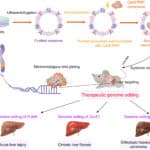Neanderthal Antibiotics Fight Against Superbugs
Millions of lives have been saved from bacterial infections thanks to antibiotics, which have transformed medicine. However, superbugs—bacteria that are resistant to several antibiotics—have emerged as a result of the overuse of antibiotics. Superbugs pose a serious risk to public health because they can lead to infections that are fatal.
Neanderthal Antibiotics Fight Against Superbugs
Scientists are looking to an unlikely source in their quest for novel antibiotics: Neanderthals. Our nearest ancestors were the Neanderthals, and in their world, bacteria were far more varied than they are now. Neanderthals may have therefore developed special defense mechanisms against infections.
Table of Contents

How is Neanderthal DNA being used by scientists to discover novel antibiotics?
Neanderthal Antibiotics Fight Against Superbugs
To discover novel antibiotics, researchers are employing Neanderthal DNA in a few different ways.
Investigating Neanderthal immune system genes: Through analyzing Neanderthal skeleton DNA, researchers can pinpoint genes related to antimicrobial defense. Afterwards, these genes might be utilized to create brand-new antibiotics or enhance ones that already exist.
Looking for antimicrobial peptides from Neanderthals: Antimicrobial peptides are short proteins that have the ability to destroy bacteria. Certain Neanderthal antimicrobial peptides that are effective against bacteria resistant to modern antibiotics have already been found by scientists. Researchers may find even more novel and potent antimicrobial peptides by examining Neanderthal DNA in more detail.
Employing Neanderthal DNA to identify potential new antibiotic candidates: Researchers have created a technique known as “molecular de-extinction” that enables them to bring extinct molecules, like proteins, back to life. Neanderthal antimicrobial peptides that are extinct in nature might be restored using this technique. The effectiveness of these peptides against contemporary bacteria could then be investigated.
What are the advantages of discovering new antibiotics with Neanderthal DNA?
Neanderthal Antibiotics Fight Against Superbugs
Finding new antibiotics with Neanderthal DNA has a number of potential advantages.
Antibiotics from Neanderthal times may be more effective than those from our time against superbugs.
Antibiotics from Neanderthal times might not have as many side effects as those from modern times.
Antibiotics from the Neanderthal era may give rise to novel classes of drugs that are entirely distinct from those available to us today.
What difficulties lie ahead in the search for novel antibiotics using Neanderthal DNA?
The search for novel antibiotics using Neanderthal DNA is not without its difficulties.
It is rare and challenging to extract Neanderthal DNA from skeletons.
Studying Neanderthal DNA is challenging because it is frequently damaged.
The effectiveness of Neanderthal antibiotics against contemporary bacteria is unknown.
In summary Neanderthal Antibiotics Fight Against Superbugs
Finding new antibiotics through the use of Neanderthal DNA is a promising approach, despite its challenges. If successful, it might inspire the creation of fresh, more potent remedies for bacterial infections.


